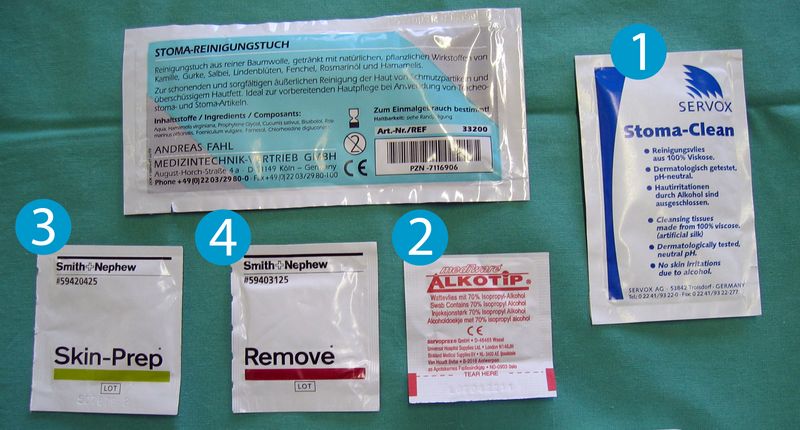Tracheostoma care
A healed and stable tracheostoma does not require any special care. The usual care routine that is applied to the rest of the skin is sufficient. And yet there are lots of care products for tracheostomas on the market. Some have their uses. Special care of the tracheostoma is recommended in the following situations.
- Directly after radiation
- If a tracheostoma plaster is used permanently
- If there are infections of the airways with increased phlegm production
- In the event of injury or wounds to the tracheostoma
Radiotherapy
After radiation, the skin in the treated area may be sore and not able to cope with any additional stress. A tracheostoma plaster should be used with restraint during this time. A tracheostoma button is not advised. Often, the best way to supply the tracheostoma during this time is with a soft silicone tube. The skin should be greased and protected from secretions from the tracheostoma. Scabs should be softened (e.g. by steaming) before being removed, as otherwise the skin could be damaged.
Permanent use of tracheostoma adhesives
The permanent use of a tracheostoma plaster permanently stresses the skin of the tracheostoma. If there are indications of the skin being over-stressed (redness, flaking, cracks, bleeding), then the adhesive technique is to be checked and use of the plaster suspended for a while.
During infections of the airways
In laryngectomees, infections of the airways lead to an increase in tracheal and bronchial secretions, which need to be coughed away. The permanent moisture in the tracheostoma can irritate the skin. The skin should therefore be protected against moisture by a layer of grease, and the secretions removed from the skin of the tracheostoma without delay. In such instances, the use of a short silicone tracheal cannula is recommended, as it facilitates atraumatic suction of the secretion without touching the tracheal mucosa. If a tracheostoma plaster is used, it is difficult to completely remove the coughed secretion without frequently removing it.
Injuries of the tracheostoma
The tracheostoma may suffer injuries. Often they range from pressure spots to pressure sores from poorly positioned tracheostomy tubes. However, for a variety of reasons there could also be surgical wounds on, or close to the tracheostoma. These wounds or injuries require very thorough care, as they could seriously inhibit the supply of the tracheostoma with various aids for the long-term. Wounds are to be protected against leaking tracheal secretions as far as possible, e.g. by applying a barrier cream (such as Comfeel Barrier Cream). Systematic antibiotic treatment is often worthwhile. Also watch out for localized fungal infections, which develop quickly in this moist environment. Whether it makes more sense to use a tracheostoma plaster or a tracheostomy tube depends largely on the location of the problem.
Tracheostoma care products
Tracheostoma cleaning wipes (1) are made by lots of manufacturers. They are used to remove secretions and scabs from the tracheostoma. Alcohol swabs (2) are also made by numerous companies. They are used to degrease the skin before applying a tracheostoma plaster. Skin-Prep (3) is a proven product for preparing the skin before applying a tracheostoma plaster. It leaves a thin resilient film on the skin that provides good adhesion and protects the skin against the plaster adhesive. The tear-off packaging contains a swab soaked in Skin-Prep so there is little risk of Skin-Prep entering the wind pipe as it is applied around the tracheostoma. Remove (4) is another tried-and-tested plaster solvent that is also available in the form of a soaked wipe in tear-off packaging. It is painted on to the tracheostoma plaster, then the adhesive is removed by painting it with the product whilst pulling off the plaster.

